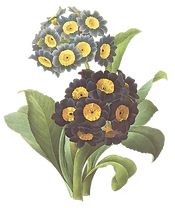Divide and Conquer
- Cynthia Thomas
- May 30, 2017
- 3 min read
Things get old and overgrown, addled and unproductive.

Sometimes the best way to keep an old plant alive is to essentially uproot it. In the garden as in life, death is often the way to regeneration.
Today, we’ll start with a forgiving plant; the iris, known to old-timers as “flags.” These perennial rhizomes are an absolute must for anyone with a cottage garden and can be worked beautifully into almost every landscape. They need to be divided, however, to stay productive.
The bearded iris’ stiff spike leaves give structure to the garden year round and when the flower forms in late spring, it is a delight to watch it open and unfold to a multi-layered treasure. Traditionally hued in shades of white and purple, the flower has now been hybridized to include every color under the sun. With hybridization, though, color is gained and fragrance is lost. I love my old purple patch because it smells like a glass of clear, grape juice.
If you have an iris patch, you probably know that the rhizome root system continually adds to the original structure. Where you plant one rhizome in about three or four years, you will have a dozen. At that point, it’s best to gently dig out the whole thing and break off the new growth from the old, sometimes hollow or mushy center. This can be done shortly after blooming and before the cold sets in.
(This is also a great time to gift your family and friends with a “baby” from your garden and iris are so easy, almost anyone with a sunny spot can grown them – always a plus when encouraging a new gardener.)

Iris roots are just a few inches long so you don’t have to dig too deep. Get a nice, sharp spade and literally cut into the center of your plant. Gently pull up the sections by the fan and shake off the dirt.
The large mass of the rhizome in the center can be discarded.
One down-side of iris, is that the outer leaves dry up and shed. We have a patch planted beside our sidewalk – which is great for full sun, but once the bed gets messy, I don’t like to look at it. I would recommend planting your iris patch away from an area that you see everyday so that the leaves can molt without you having to get in there and tidy up all the time. The plants are generally two - three feet tall (unless you buy dwarfs) so it’s also a good idea to have some large rocks or a trellis or some underplanting like sedum that can help them stand up. When the big heads bloom they can tend to lean down. And if your plants are reaching for the sun, this problem is exacerbated.
Another good idea is to trim the leaves when transplanting – as shown in this video. Sometimes I like to do this in late summer when the leave get brown tips just to make the area look better (sidewalk = work). As you know energy is stored in the leaves, so don’t cut too much off.
And I encourage you to be mindful when doing this garden task. I believe the garden can teach us a lot about life. As you place your spade and push your foot down on the shovel, think of the pain that is necessary to achieve the task. I think it’s true in our own life as well. We get comfortable in the circumstances of our lives – sometimes too comfortable. If we want to grown and bloom, our Heavenly Father may have to get under our skin. He may need to reach in with caring hands and remove what’s just hanging on.
As you pull the plant from the ground and lift it up to the light, remember that God is the perfect pruner who knows just where to pull apart. He will trim the brown ends – parts of your life once useful, but now unnecessary.
And ultimately, He will plant you anew. Whether it’s back in the same spot with a fresh perspective or placed in a new home with unfamiliar surroundings; the prospects can be good when you allow yourself to adjust to the new ground, put down roots, and simply focus on being productive.
You may feel forlorn and forgotten for a season, just as I did when we moved to New York to help my mother-in-law. But then one day, you’ll wake up and see that you had to move to face new challenges, meet new people and find your grip on God not your circumstances.





























Comments